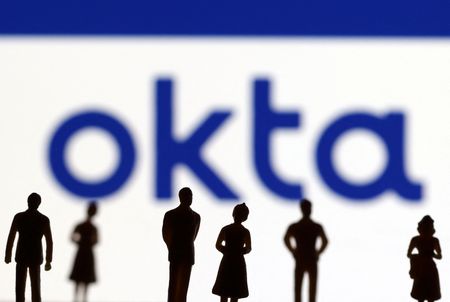Stock market today: S&P 500 closes at fresh record ahead of Nvidia earnings
Investing.com -- Identity and access management company Okta (NASDAQ:OKTA) held its annual user event earlier this week, Oktane 2024, where the company unveiled several new product enhancements across the Workforce & Customer Identity product suites.
In the aftermath of the event, analysts from several investment firms shared their key takeaways.
Analysts at Bank of America said Okta’s efforts to keep launching new products and expand its identity platform is a positive, with customer reception also upbeat.
However, the bank noted a “timing mismatch as revenues stemming from new product launches are unlikely to materially contribute to overall growth in time to offset the effects from consumption headwinds.”
As such, BofA analysts reiterated their view that “the risk is likely to outweigh the reward for the next few quarters.”
Jefferies analysts also expressed a cautious stance. The firm views Okta’s tech updates as “modestly incremental” but continues to see the company as the access market leader.
However, while Jefferies remains positive on Okta's long-term strategic vision and believes the stock's 4.4 times consensus 2025 revenue valuation “should limit downside,” it maintains a Hold rating until there are clear signs of a growth inflection.
Separately, Morgan Stanley analysts reiterated an Equal Weight rating on Okta’s stock.
“While constructive on new AI-enablement products, we walked away slightly less positive post conference given mixed partner feedback and management commentary suggesting no inflection in growth,” they said in a Thursday note.
The Wall Street giant also sees a modest downside to consensus revenue estimates for the calendar 2025.
Lastly, BTIG analysts reaffirmed a Buy rating on Okta stock after the event but cut their price target from $128 to $98.
They believe the company’s management “struck a fairly balanced tone during the investor truck.”
“Specifically, it was clear that headwinds to seat counts in workforce identity and monthly active users (MAUs) in customer identity are expected to persist through 1H’26,” analysts added.
“And while there is potential for growth to improve on traction with large enterprise customers, new products, and market expansion – these initiatives will take time to play out.”
